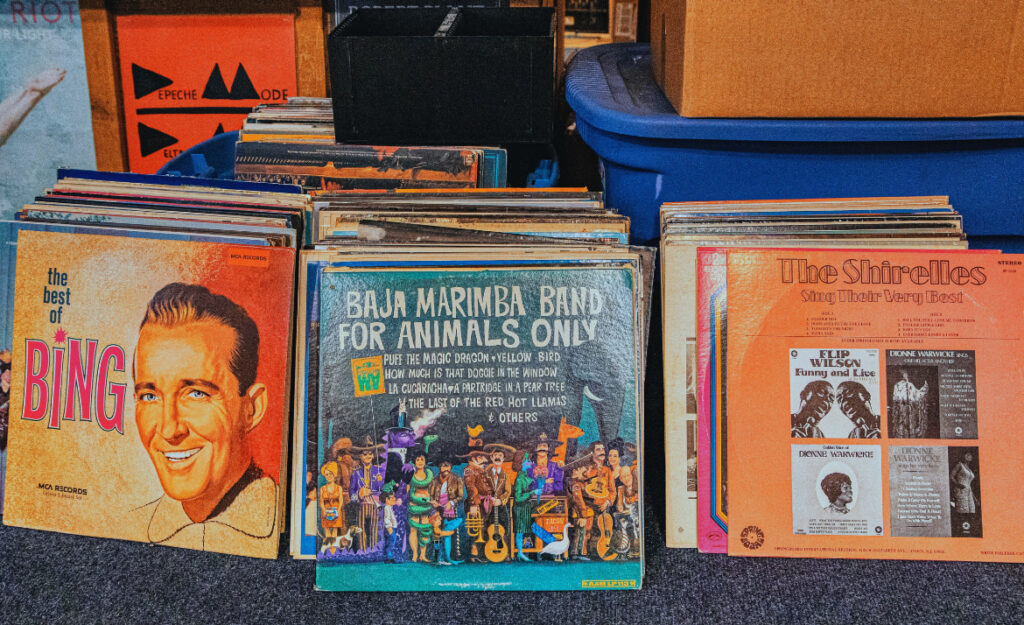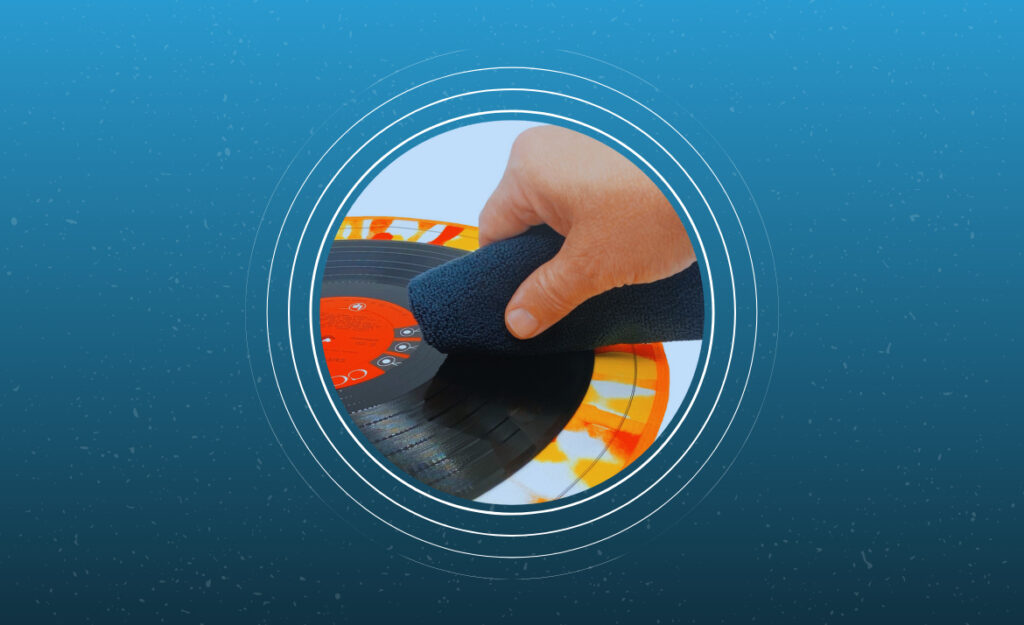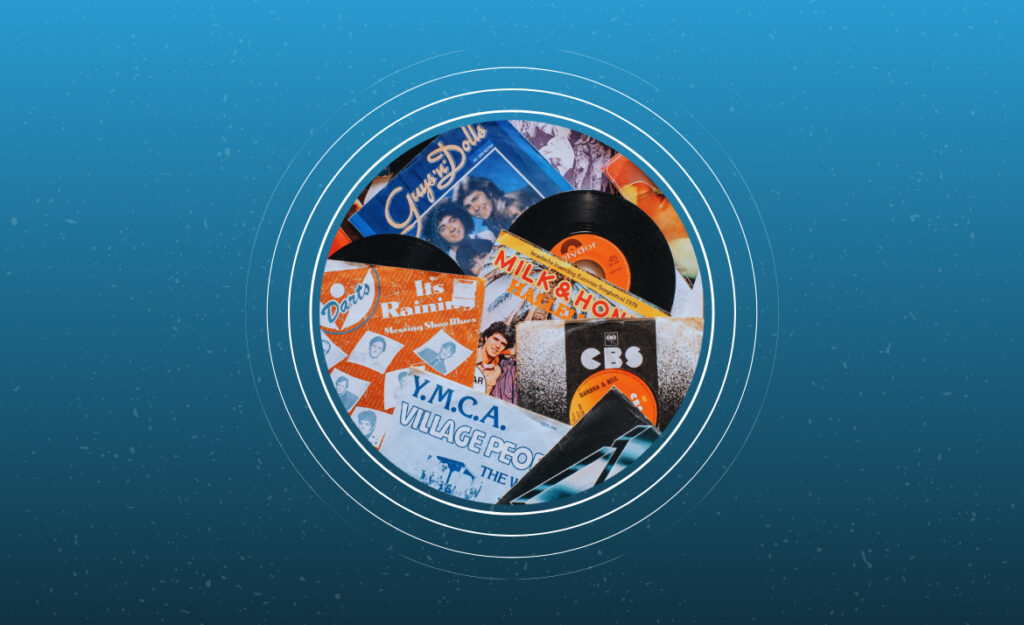
Crackling pops and subtle static can disrupt even the most carefully curated vinyl session. People often seek solutions like distilled water vinyl cleaning to chase after that elusive, crystal-clear sound that makes each record spin magical.
Vinyl records have unique grooves, capturing musical detail but also dust and oils that degrade audio quality. Knowing the best way to clean vinyl releases more of your collection’s sonic potential, preserving valued albums for the long run.
Discover below how to harness distilled water vinyl cleaning, revive favorite records, and integrate proven cleaning techniques for satisfying listening—each step tailored for both beginner and veteran enthusiasts.
Choosing the Right Cleaning Materials Guarantees Audible Improvements
Effective vinyl cleaning begins with the right tools. Choosing appropriate materials ensures your efforts reward you with noticeable reductions in surface noise and skips, making music playback more enjoyable and true to the original recording.
Many people grab ordinary tap water or household cloths, which seem harmless but can introduce residues or micro-scratches. Switching to distilled water vinyl cleaning with soft, lint-free wipes vastly improves cleanliness and playback consistency.
Comparing Common Cleaning Fluids: A Side-by-Side Review
Record collectors swap stories about their favorite fluids, but distilled water remains the gold standard for purity. Commercial cleaners may work in a pinch, but check labels for alcohol content, as harsher chemicals could dissolve delicate labels or leach plasticizers from records.
If you overhear someone at a shop say, “I just use window cleaner and an old shirt,” avoid repeating that. Stick to distilled water vinyl methods to eliminate mineral build-up and lingering scents left by cleaners.
Try pouring distilled water into a clean spray bottle, misting a microfiber cloth, and gently wiping grooves in slow, circular motion. The result is a refreshed surface and reduced noise on playback.
Cloth Selection Rules: Touch Matters as Much as Technique
Not all cloths are created equal. While paper towels seem handy, their fibers can leave particles or faint scratches behind. Choose tightly woven microfiber or anti-static record-specific wipes for best results.
Watch for smudges or fibers left on vinyl after cleaning. If your cloth “catches” or leaves residue, discard it and switch. Clean tools keep records pristine, complementing the benefits of distilled water vinyl routines.
For heavily soiled albums, dedicate one cloth to initial grime removal and another only for final passes. This two-step approach doubles cleaning efficiency and maintains a gentle finish.
| Cleaning Solution | Residue Risk | Ease of Use | Best For |
|---|---|---|---|
| Distilled Water | Very low | Simple spray/wipe | Routine cleanings |
| Tap Water | High (minerals) | Easy, but not advised | Rare emergencies |
| Commercial Vinyl Cleaner | Low, varies by brand | Spray, some require rinsing | Deep cleans |
| Isopropyl Alcohol | Potentially damaging | Use with caution | Mold/mildew |
| Specialized Enzyme Cleaner | Low | Requires soaking | Sticky residues |
Following Safe Cleaning Sequences Protects Grooves and Sound Quality
A gentle, ordered process preserves your records while maximizing sound clarity. Rushing or skipping steps can push dust deeper into the grooves or even warp delicate edges, introducing unwanted artifacts with each play.
Think of vinyl cleaning like brushing teeth—cutting corners invites trouble. Commit to each step and enjoy records that last decades, not just months.
Preparing the Record Surface Reduces Introduction of New Contaminants
Start by dusting the vinyl with a carbon-fiber brush before any liquid comes into play. This removes loose particles, preventing them from becoming embedded when dampened during distilled water vinyl cleaning.
- Use dry, anti-static brushes to sweep from center to edge—never back and forth to avoid redepositing dust.
- Inspect under bright light to spot fingerprints or greasy smears needing extra attention.
- Hold records only by edges and label; avoid touching grooves.
- Move slowly to catch all debris before introducing moisture.
- After brushing, pause and examine the surface for shiny or gritty patches signaling stubborn dirt.
Once dry brushing reveals problem areas, plan to focus liquid cleaning there first, limiting moisture exposure to affected spots.
Wiping and Drying Techniques Lock in Sonic Gains
Moist microfiber pads should glide in gentle arcs following the groove’s direction. Applying excessive force can drive particles deeper, so let the cloth do the work for you.
- Spray distilled water onto your cloth, not the vinyl itself, for maximum control.
- Start from the inner label, moving steadily toward the record’s edge in a single continuous stroke.
- Avoid circular wiping back and forth; always follow the grooves for safe removal.
- Allow the cleaned vinyl to air dry upright in a dish rack or on a soft towel to avoid dust resettling.
- Finally, double-check for moisture near labels to prevent paper warping.
Finishing with a dry anti-static brush ensures no new lint or fibers remain before sleeving the record back into its cover.
Addressing Specialty Issues: Removing Mold and Handling Sticky Residue Restores Playability
Certain records—yard sale discoveries, old inherited LPs—harbor mold or sticky glue from past labels. Special handling ensures safety and prevents permanent damage, while helping return these treasures to regular use through improved distilled water vinyl techniques.
Working with contaminated records means protecting yourself as well as the vinyl. Always wear disposable gloves and work in a ventilated space.
Targeting Mold Safely to Prevent Recurrence
If a record shows white or gray fuzz, first clean with a dry cloth outdoors. A diluted isopropyl alcohol solution (mixed with distilled water) tackles fungal growth, but use sparingly and rinse off with more distilled water to avoid damage.
People may ask, “Is it salvageable?” If the grooves are clear and labels intact, careful cleaning saves most records. Always test your cleaning method on a small edge before tackling the whole surface.
Store previously affected albums outside the main collection until certain no regrowth appears after a few weeks. Replace sleeves if they show any mildew staining or odor.
Managing Sticky Labels or Residual Tape
Address adhesives with patience: a little distilled water on a q-tip loosens most residue. Avoid using sharp blades or abrasive scrubbers that can gouge grooves and introduce permanent hiss to playback.
If residue proves stubborn, apply a drop of mild dish soap to distilled water, gently dabbing only the sticky patch. Rinse thoroughly and dry immediately to prevent water spots or soapy streaks.
Check your results by gently running your fingertip around the treated area—not across grooves, but along the areas cleaned. If you feel roughness or stickiness, repeat the distilled water vinyl cycle as needed.
Integrating Cleaning Into Regular Record Listening Builds Good Habits
Daily maintenance prevents dust and debris from settling deeper, meaning less work and more listening time. Integrating distilled water vinyl cleaning into playback routines offers tangible improvements and cultivates careful handling and pride in your collection.
Setting aside a few minutes before and after listening sessions ensures cleaner records and better sound, with the added benefit of catching early signs of wear or damage before they worsen.
Develop a Repeatable Cleaning Script for Streamlined Results
Experienced collectors create simple routines. For example: “Every Friday night, before spinning a new record, I dry-brush followed by a distilled water pass on any visible smudges. During playback, I return tools to their storage bins.”
This pattern reduces interruptions and keeps supplies at hand, making cleaning a seamless part of the hobby—rather than a dreaded chore. A regular approach also helps spot patterns, like recurring static or dust, that signal changing air filters or storage tweaks.
Closing the evening with a cleaning pass on just-played records means they’re always ready for the next session—no surprises, no static pops. This predictability boosts the enjoyment and lifespan of every album.
Storing Cleaned Vinyl to Maintain Results
Once records are clean, invest in anti-static inner sleeves and store albums vertically, away from heaters or direct sunlight. Tell yourself, “Every album gets sleeved—no exceptions,” just as a book gets returned to its shelf.
If you lend out records, remind friends to handle them by the edges and re-sleeve after listening—your careful habits can be contagious. Noticing a sudden increase in pops may signal it’s time to review your storage setup.
Every cleaning session saves you hours of future troubleshooting, ensuring each drop of distilled water investment returns hours of undisturbed listening pleasure.
Enhancing Your Listening Room with Environmental Tweaks Supports Vinyl Clarity
Ambient dust, static, and humidity sway vinyl sound just as much as your cleaning habits. Small adjustments to your listening space amplify the benefits of distilled water vinyl cleaning and reduce the need for deep cleans.
Comfortable humidity (between 40 and 55 percent) keeps records supple and static at bay. A small hygrometer on your record shelf forecasts maintenance needs long before surface noise creeps back in.
Controlling Static Generators for Smoother Playback
Rugs and synthetic-fiber furniture can increase static buildup, especially in dry seasons. Swapping a nylon mat for a cork or leather one beneath your turntable can reduce crackle and dust attraction by half.
Keep a grounded anti-static gun nearby. One pass above your spinning platter between albums greatly reduces audible pops—no waiting for a storm to shift the air.
Run a slightly damp cloth (with distilled water) over your speakers’ surfaces once a week, too. This prevents stray static from attracting airborne fluff toward your precious grooves.
Fight Dust at Its Source for Fewer Cleanings
Vacuum your listening room with a HEPA filter at least weekly, focusing on baseboards and any carpeted areas. This action traps fine particles before they alight on visible surfaces, leaving less work for vinyl cleaning sessions.
Cover unused turntables and receivers with breathable cloths. Quick action after a session—slipping the cover into place and giving it a gentle shake outside—keeps dust from settling in plug pins or within moving platter parts.
Remind household members to close windows during pollen season and change HVAC filters regularly. Fewer contaminants in the air directly translate into quieter records and less frequent use of cleaning fluids.
Adapting Techniques for Different Record Conditions Maximizes Longevity
Every record offers unique cleaning challenges, from lightweight singles to heavyweight audiophile pressings. Adjusting distilled water vinyl protocols by record type prevents overexposure or ineffective cleaning, boosting lifespan and sound consistency across your collection.
Monitor how much cleaning and pressure specific records tolerate, noting any differences in response. Each iteration helps refine your approach, producing better results for your entire library.
Heavily Used Versus Pristine Records: Tailoring Your Touch
Older or thrifted records may require multiple cleaning cycles and firmer handling to dislodge grime, but don’t assume newer pressings can handle the same treatment. For recently bought audiophile discs, use only the gentlest passes with a dampened, soft cloth.
If playback reveals recurring pops, isolate the noisy track and focus cleaning passes solely there. For truly stubborn noise, try a minimal amount of gentle enzyme cleaner, promptly following up with distilled water vinyl rinses.
Document your successful methods for each record in a small logbook. This habit not only saves you time but also creates a helpful reference if a favorite album develops new issues after further play.
Quick Fixes for Surface Scuffs Without Full Wet Cleaning
For minor visible marks, skip full wet cleaning and gently use an anti-static brush or a record eraser—the type used for dry surface smudges. If results aren’t clear within two or three swipes, escalate to a light distilled water wipe.
Signs of improvement—smoother surface sheen and reduced tactile snags—guide next steps. Always halt if you notice fresh scratches, switching immediately to softer cloths or backing off cleaning frequency for more fragile releases.
A polished surface doesn’t guarantee noise-free playback, but consistent application of careful, varied cleaning keeps your vinyl sounding lively while preserving their value and physical condition.
Consistently Applying Best Practices Ensures Lifelong Enjoyment
Embracing distilled water vinyl cleaning isn’t a one-time fix. Instead, it’s a series of mindful actions that reinforce your connection to music, preserve collectable assets, and create memorable listening moments without unneeded interruptions.
Focusing on a single, dependable cleaning routine increases the joy and value you derive from each record. When habits become second nature, maintenance feels like part of the listening ritual—not a separate task.
Maintaining your collection through careful cleaning means more than just less static—it guarantees the longevity of your favorite albums and the stories tied to every groove, spin, and beat you revisit.



